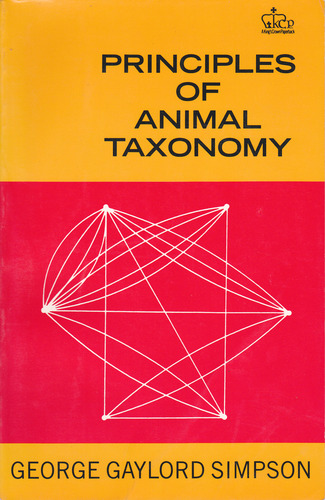Principles of animal taxonomy ebook download
Par cross gregorio le vendredi, juin 5 2015, 07:21 - Lien permanent
Principles of animal taxonomy. George Gaylord Simpson

Principles.of.animal.taxonomy.pdf
ISBN: 023109650X,9780231096508 | 131 pages | 4 Mb

Principles of animal taxonomy George Gaylord Simpson
Publisher: Columbia University Press
They then turn to taxonomy, as they study increasingly complex types of animals. Yeah, it is difficult but it is not boring at all. The choice of the names by which we refer to the individual species, genera or families in the animal kingdom is ruled by a set of principles known as the International Code of Zoological Nomenclature[2] (hereafter, 'the Code'). Exclusive excerpt from Lord Robert May's book, Theoretical Ecology: Principles and Applications, published by Oxford University Press, 2007. The first significant definitions were developed by Aristotle. Okay, so I was talking about FPJ 140 or ZOO 140 (Animal Taxonomy). Excerpt from Theoretical Ecology: Principles and Applications. Scientifically, it is called taxonomy and rooted in ancient Greek. Most think that taxonomy is boring and difficult. Levels of structural organization; Outline classification of plants, animals and microorganisms; Principles and methods of Taxonomy. This course begins with an overview of key concepts in zoology as students examine the characteristics of the animal cell and discuss heredity and issues of evolution, including natural selection. From microscopic investigation to the basics of veterinary medicine, Zoology covers principles of comparative animal anatomy, physiology, and genetics. This is because introducing a new species name, or otherwise intervening on the use of the scientific names of animals, is not simply a way to translate into words the author's view on a particular problem of animal taxonomy. This method of classification has changed over time to reflect and accommodate current thinking in science, but primarily the principle has remained unchanged, grouping animals based on shared characteristics.